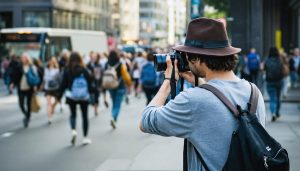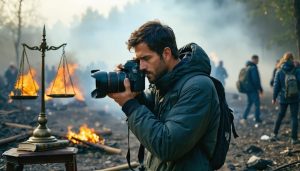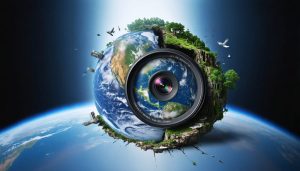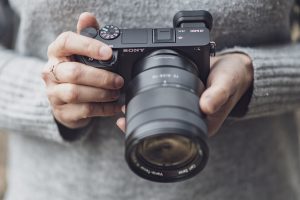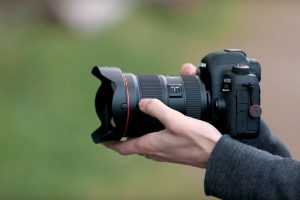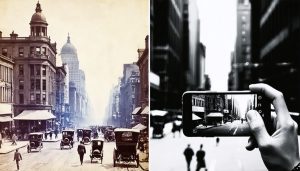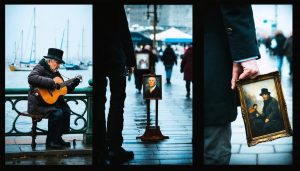
Picture this: You’re photographing a stunning cityscape when someone demands you stop, claiming it’s illegal to take their photo in public. The reality? In most jurisdictions across the United States and many other countries, there is no legal expectation of privacy in public spaces. This fundamental principle shapes modern photography rights and has profound implications for both photographers and their subjects.
The ubiquity of smartphones and social media has thrust this issue into the spotlight, making it more relevant than ever for both professional photographers and casual shutterbugs. While security cameras capture our images countless times daily, the sight of a photographer with a professional camera can still trigger concerns and confrontations.
Understanding your rights as a photographer – and the reasonable limits of those rights – isn’t just about legal protection. It’s about fostering respect between photographers and subjects while preserving the vital role photography plays in documenting our shared public life. Whether you’re a street photographer capturing candid moments or a tourist photographing landmarks, knowing where you stand legally helps you shoot with confidence while respecting others’ dignity.
This guide explores the legal foundations, ethical considerations, and practical guidelines for navigating public photography rights in today’s complex social landscape.
The Legal Foundation of Public Photography
Understanding ‘No Expectation of Privacy’
The concept of “no expectation of privacy in public” stems from established legal precedents and common law principles. At its core, this doctrine states that when individuals are in public spaces, they cannot reasonably expect the same level of privacy they would enjoy in their homes or private spaces. This principle applies directly to photography, forming the legal foundation that allows photographers to capture images in public places without obtaining explicit permission from their subjects.
The doctrine was significantly shaped by the 1967 Supreme Court case Katz v. United States, which established the “reasonable expectation of privacy” test. This test considers whether a person has a legitimate, subjective expectation of privacy and whether society recognizes that expectation as reasonable. In public spaces like streets, parks, or shopping centers, courts have consistently held that such an expectation doesn’t exist.
This doesn’t mean photographers have unlimited rights – other laws regarding harassment, commercial use, and private property still apply. However, it does protect the fundamental right to photograph in public spaces, balancing individual privacy concerns with the public’s right to document and create in shared spaces.
Where Public Spaces End and Private Rights Begin
While the right to photograph in public spaces is well-established, it’s essential to understand where these rights encounter their limits. Generally, public spaces include streets, parks, and other government-owned areas accessible to everyone. However, privately owned spaces that appear public – like shopping malls, retail stores, and restaurant patios – may have different rules and restrictions.
Property owners have the right to set their own photography policies on their premises, even if these areas are open to the public. For instance, many museums prohibit flash photography to protect artwork, while concert venues often ban professional cameras to protect performers’ rights. Similarly, while you can photograph the exterior of private buildings from public spaces, shooting through windows or over fences into private property could cross legal boundaries.
The key is recognizing that “public view” doesn’t always equal “public space.” A good rule of thumb is to consider whether you’re standing on truly public property and whether your subject has a reasonable expectation of privacy, regardless of their visibility from a public vantage point.
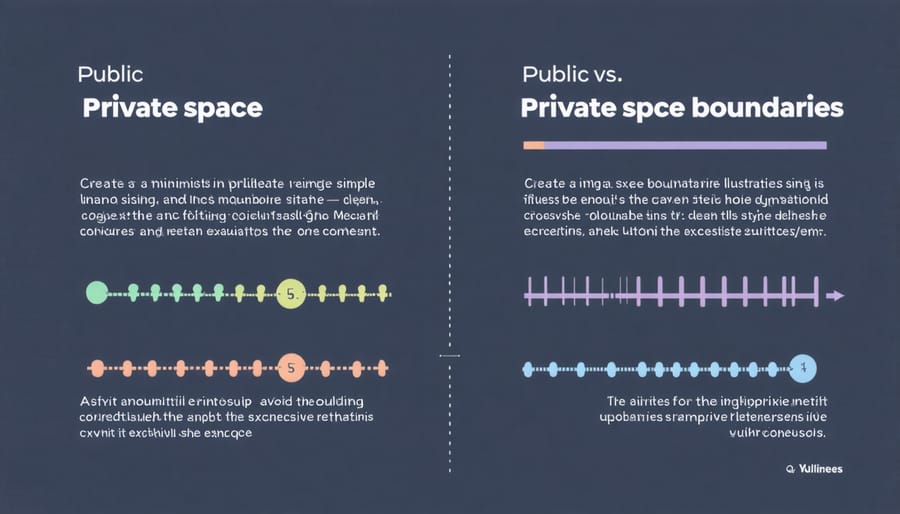
Ethical Considerations Beyond Legal Rights

Respect vs. Rights
While photographers have clear legal rights to capture images in public spaces, there’s an important distinction between what we can do and what we should do. As creators who aim to use photography as a positive force, we must balance our artistic freedom with respect for others’ comfort and dignity.
Consider this scenario: You spot a compelling street scene with strangers going about their day. Legally, you can photograph it, but taking a moment to assess the situation through an ethical lens can make a significant difference. Are there children present? Is someone in a vulnerable situation? Would you feel comfortable if the roles were reversed?
Practicing respectful photography doesn’t mean giving up your rights – it means exercising them thoughtfully. Here are some practical approaches:
– Make yourself visible and approachable rather than shooting from hidden positions
– If someone expresses discomfort, engage in friendly dialogue or move on
– Be particularly mindful in situations involving children, medical emergencies, or private moments
– Consider whether your photo’s artistic or documentary value outweighs potential distress to subjects
Remember, building trust between photographers and the public helps preserve our rights for the future. When we demonstrate respect and sensitivity, we’re more likely to maintain the freedoms we currently enjoy while creating meaningful work that resonates with viewers.
Cultural Sensitivities and Context
Cultural perspectives on privacy and photography vary significantly worldwide, and understanding these differences is crucial for photographers working across different communities. In Japan, for instance, many people consider it extremely disrespectful to photograph strangers without permission, even in public spaces. This contrasts sharply with street photography traditions in places like New York or Paris, where candid public photography is more widely accepted and even celebrated.
Middle Eastern countries often have strict cultural and religious considerations regarding photography, particularly when it comes to photographing women or religious sites. Some communities may view cameras with suspicion, associating them with tourism that can feel intrusive or disrespectful to local customs.
Indigenous communities worldwide often have specific beliefs about photography, with some considering it spiritually inappropriate to photograph certain ceremonies or sacred sites. In many Asian cultures, the concept of “saving face” makes people particularly sensitive about being photographed in potentially embarrassing situations, even in public spaces.
Understanding these cultural nuances helps photographers navigate different environments respectfully. While legal rights might permit public photography, cultural sensitivity often requires going beyond mere legality. Consider learning about local customs before photographing in unfamiliar communities, and when in doubt, asking permission can build trust and create more meaningful photographic opportunities.
Practical Guidelines for Respectful Street Photography
Reading Body Language and Social Cues
While you have the legal right to photograph in public spaces, being attentive to your subjects’ body language is crucial for ethical photography. Watch for clear signs of discomfort: people turning away, raising their hands to block their face, or deliberately trying to move out of frame. These are obvious indicators that they don’t wish to be photographed.
More subtle cues might include crossed arms, tense shoulders, or quick glances in your direction followed by hurried movement. Pay attention to facial expressions – furrowed brows, tight lips, or forced smiles often signal unease. Parents may also position themselves between you and their children or gather their family closer, indicating protective behavior.
When photographing events or street scenes, notice if people’s behavior changes when they spot your camera. Are they becoming more rigid or self-conscious? Have natural conversations and activities suddenly become stilted? These reactions suggest your presence is affecting their comfort level.
Remember that cultural differences can influence how people express discomfort. In some cultures, direct eye contact might signal confrontation, while in others, avoiding eye contact indicates distress. When working in diverse communities, familiarize yourself with local customs and social norms.
If you notice these signs, respect them by lowering your camera, moving to a different location, or finding another subject. This builds trust and maintains photography’s reputation as a responsible practice.
Approaching Subjects and Obtaining Consent
While you have the legal right to photograph in public spaces, approaching subjects with respect and transparency can lead to better photographs and more positive interactions. Building trust with subjects starts with clear communication and genuine interest in their comfort level.
When photographing strangers, consider these practical approaches:
– Make eye contact and smile before raising your camera
– Introduce yourself as a photographer and briefly explain your purpose
– Keep your body language open and non-threatening
– Be prepared for both acceptance and rejection
– Have business cards ready to share if requested
If you’re seeking formal consent, be direct but friendly: “I’m working on a street photography project, and I’d love to include your photo. Would that be okay?” If they agree, offer to share the final image via email or your portfolio website.
Remember that some people may decline for personal or cultural reasons. Always respect their decision gracefully and thank them for their time. If someone appears uncomfortable or hesitant, it’s better to move on rather than push the issue.
For candid shots where approaching beforehand isn’t practical, be prepared to engage if the subject notices you. Have a brief explanation ready and be willing to delete photos if requested, even though you’re not legally required to do so.
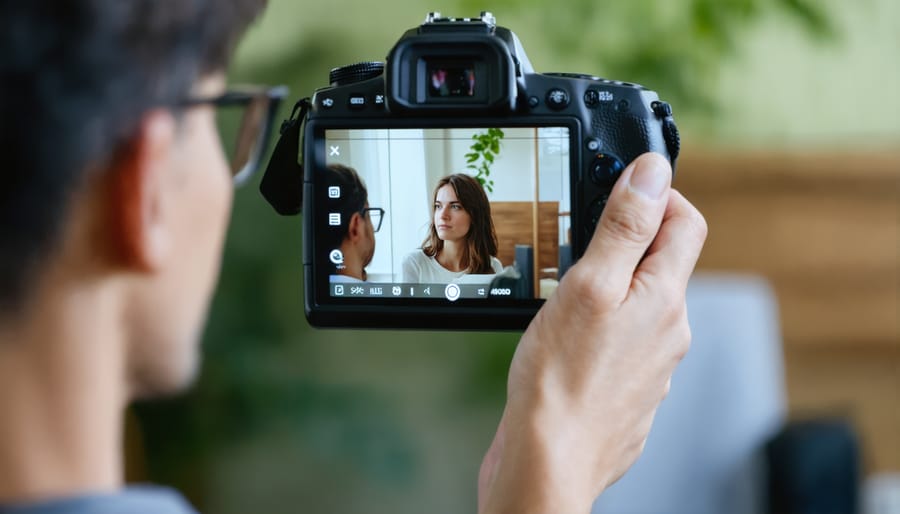
Managing Confrontations and Complaints
When confronted about taking photographs in public spaces, remain calm and professional. Your first response should always be courteous and educational. Explain that photography in public places is legally protected, but do so without becoming defensive or confrontational.
If someone objects to being photographed, consider their perspective. While you may have the legal right to continue shooting, sometimes the best course of action is to respect their wishes and move on. This helps maintain goodwill within the photography community and prevents unnecessary escalation.
When dealing with security guards or property owners, stay composed and know your rights. If asked to stop photographing from public property, politely explain your legal right to do so. However, if you’re on private property, respect the owner’s authority to restrict photography.
Keep these practical tips in mind when handling confrontations:
– Always carry identification and, if applicable, press credentials
– Have relevant photography laws saved on your phone for reference
– Consider carrying business cards to establish credibility
– Document interactions if they become hostile
– Be willing to show photos you’ve taken if asked
– Know when to walk away from a situation that’s becoming unsafe
Remember that just because you can take a photo doesn’t always mean you should. Use good judgment and maintain professional ethics in all situations. If law enforcement becomes involved, remain respectful while firmly knowing and asserting your rights.
Digital Age Considerations
Social Media and Image Distribution
While the law may permit public photography, sharing those images online requires careful consideration in today’s interconnected world. Social media platforms have transformed how we distribute photographs, making it easier than ever to share images with a global audience instantly.
When sharing photos taken in public spaces, consider implementing these responsible practices: Always respect requests from individuals who express discomfort with their image being shared, even if you weren’t legally required to ask permission to take the photo. Consider blurring faces in crowd shots when posting to social media, particularly if the images feature children or potentially sensitive situations.
Be mindful of the platform’s privacy settings and terms of service when sharing public photography. Some platforms may claim certain rights to posted images, while others might allow unrestricted sharing. Additionally, consider watermarking your photos or using lower-resolution versions for social media to protect your work while maintaining the subject’s dignity.
Remember that what’s legal isn’t always ethical. A thoughtful approach to image sharing helps maintain public trust in photographers while protecting both your subjects’ privacy and your reputation as a responsible photographer.
Digital Rights Management
Digital Rights Management (DRM) in public photography presents a unique challenge in balancing the rights of photographers with those of their subjects. While photographers own the copyright to their images taken in public spaces, they must still navigate certain restrictions when it comes to commercial use and distribution.
For photographers, protecting their work often involves watermarking images, using metadata embedding, and registering copyrights for significant works. However, it’s important to note that these protections shouldn’t interfere with fair use or legitimate public interest documentation.
From the subject’s perspective, while they can’t prevent photography in public spaces, they retain certain rights regarding the commercial use of their image. This is particularly relevant for recognizable individuals in photographs used for advertising or promotional purposes, where model releases may be required.
A balanced approach involves:
– Using visible watermarks for online sharing
– Including copyright information in metadata
– Obtaining model releases when necessary
– Respecting requests for image removal in sensitive situations
– Maintaining clear documentation of where and when photos were taken
This framework helps ensure both creative freedom and responsible image use while maintaining professional standards in public photography.
Understanding the nuances of public photography rights is crucial for both photographers and the general public. While the law clearly establishes that there’s no reasonable expectation of privacy in public spaces, responsible photographers recognize that legal rights come with ethical obligations.
Throughout this discussion, we’ve explored how courts have consistently upheld photographers’ rights to capture images in public places, while also acknowledging the importance of respecting personal boundaries. The key takeaway is that just because you can legally take a photo doesn’t always mean you should.
successful photographers often find that building trust and maintaining positive relationships with their subjects and the community leads to better opportunities and more meaningful work. By practicing courteous behavior, such as asking for permission when appropriate, acknowledging concerns, and being transparent about your intentions, you can create a more positive environment for everyone involved.
Remember that photography laws exist to protect both creators and subjects. While exercising your rights as a photographer, consider the impact of your actions on others. This balanced approach not only helps avoid confrontations but also contributes to the positive public perception of photography as an art form and profession.
By staying informed about your rights while remaining mindful of others’ comfort, you can confidently pursue your photographic endeavors while maintaining professional integrity and ethical standards.

